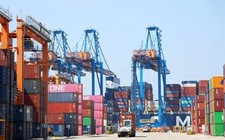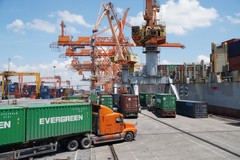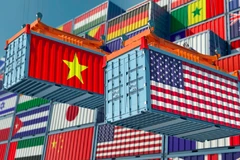



A team of inspectors from multiple responsible agencies has concluded its inspection of 44 rice export traders operating in the Mekong Delta region, said the Ministry of Industry and Trade.

While AmCham acknowledges the need to address the growing trade deficit between the two nations, it strongly urges the US administration to consider implementing a grace period.

To mitigate the impact of export constraints, retail expansion is being prioritized to stimulate domestic consumption.

Enterprises in HCMC are proactively exploring new markets beyond the traditional US market while diversifying their product offerings tailored to various customer segments across different countries.

Vietnam, with a population exceeding 100 million, has fewer than 1 million registered businesses. Hence, the country is strategically building a large, strong business community as a national priority.

A seminar, entitled "Positioning Vietnamese Rice in the New Era" was held in Can Tho City, organized by the Vietnam Food Association (VFA) on April 4.

Minister of Industry and Trade Nguyen Hong Dien sent an official diplomatic note to the US authorities, proposing a temporary suspension of the decision to implement a 46 percent tariff on certain goods imported from Vietnam.

Prime Minister Pham Minh Chinh signed Decision No.713/QD-TTg to establish a task force to strengthen cooperation and proactively adapt to changes in US economic and trade policies on April 4.

Ho Chi Minh City is exploring a "one-stop" mechanism to facilitate investment in creative start-up firms, according to Director Lam Dinh Thang of the Department of Science and Technology.

The OCOP product market is experiencing instability in sales, coupled with challenges in maintaining consistent product quality.

The retail prices of petrol were revised upward on April 3 afternoon following the latest adjustment by the Ministry of Industry and Trade and the Ministry of Finance.

Vietnam’s transfer of state-owned enterprises (SOEs) to the Ministry of Finance signals a push for reform, aiming to improve efficiency and contribution to national growth amidst evolving economic policies.

The agricultural sector is increasingly adopting smart devices, IoT, and AI-based technologies to foster sustainable development, enhance crop yields, manage pests and diseases, and improve farmer productivity.

Ho Chi Minh City fosters growing trade with Laos, leading to expanded market opportunities.

To effectively implement Ho Chi Minh City's 2025 digital transformation agenda, local authorities, organizations, and businesses have focused on enhancing digitization within their respective sectors.

As part of its ongoing efforts to address housing needs, Ho Chi Minh City has announced plans to initiate the construction of eight social housing projects in 2025, said Director of the Ho Chi Minh City Department of Construction Tran Hoang Quan.

Vietnam has implemented temporary anti-dumping duties in response to a 91 percent surge in steel imports from China and South Korea.

Vietnam has been attracting and utilizing foreign direct investment (FDI) for nearly four decades since 1988. This capital flow is regarded as one of the key pillars of economic growth.

The agreement is expected to generate over GBP20 million (US$26 million) in revenue for the UK seafood sector over the next five years.

The Vietnamese food and beverage sector is experiencing a significant market adjustment, where only well-managed, financially sound companies can endure due to increased competition and shifting customer demands.
FEEDBACK